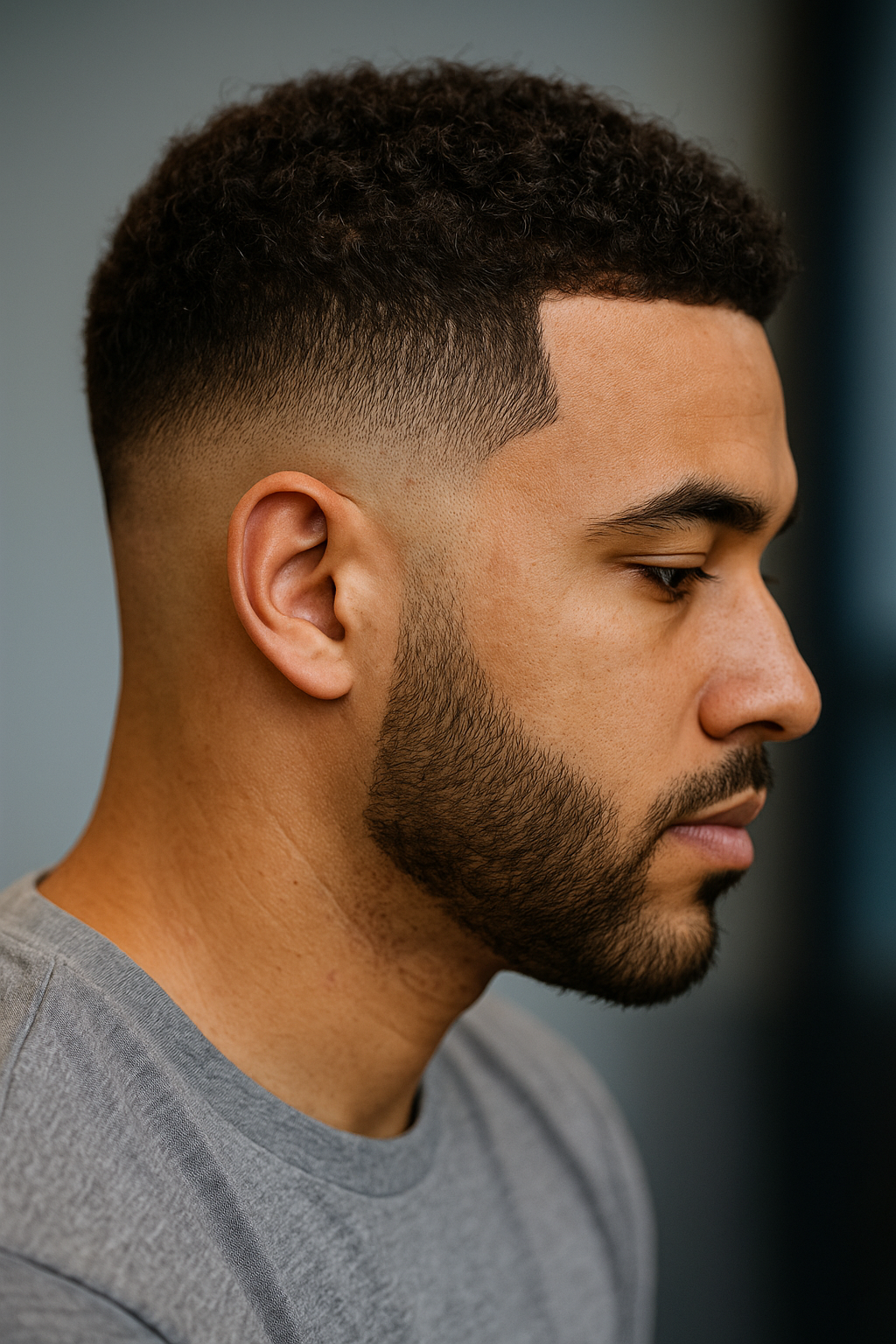The Ultimate Fade Haircut Guide

A fade haircut is defined by the smooth transition from longer hair on top to progressively shorter lengths on the sides and back. Using clippers, the barber gradually blends the lengths to create a seamless gradient without harsh lines. A well‑executed fade gives any style a polished, modern look and works with virtually every hair type.
Types of Fade
There are several common fade heights. Choosing the right one depends on how dramatic you want the contrast between the top and sides.
- Low Fade: The fade begins just above the ears and follows the hairline. It’s subtle and ideal if you want to keep more length on the sides. Learn more on our dedicated low fade page.
- Mid Fade: Starting at the temples, a mid fade offers a balanced look that works with short or medium‑length tops.
- High Fade: The fade starts high on the head, often around the crown, creating a bold contrast between the top and sides.
- Skin Fade: Also known as a bald fade, this style takes the sides right down to the skin for the cleanest finish.
- Taper Fade: A taper is similar to a low fade but leaves more length and gradually narrows towards the neckline. It’s perfect for a more conservative or professional look.
Other variations include the drop fade, which curves around the ears and dips at the back of the head. Regardless of the style, ask your barber to adjust the fade height to suit your head shape and hair density.
Fade vs. Taper
Although the terms are used interchangeably, a fade generally refers to a more dramatic contrast with shorter sides that may be taken down to the skin. A taper keeps more length on the sides and transitions more subtly. If you want a conservative style with less scalp exposure, a taper is the way to go.

Talking to Your Barber
When requesting a fade, be specific about the length you want on top, how high you want the fade to start and whether you prefer a skin fade or a tapered finish. Bring reference photos and discuss maintenance; high fades require more frequent visits to stay sharp.
Maintain Your Fade
A clean fade relies on precision. Invest in quality clippers for touch‑ups between appointments. Our Tools guide features professional‑grade clippers and trimmers that make it easy to keep your fade looking fresh.
Frequently Asked Questions
What's the difference between a fade and a taper?
A fade generally refers to a more dramatic contrast with shorter sides that may be taken down to the skin. A taper keeps more length on the sides and transitions more subtly. If you want a conservative style with less scalp exposure, a taper is the way to go.
How often should I get my fade touched up?
To maintain a crisp fade, visit your barber every 2-3 weeks. High fades and skin fades need more frequent touch-ups (every 1-2 weeks), while low fades can last 3-4 weeks.
Which fade is best for my face shape?
Low fades suit round faces by adding length. High fades complement long faces by creating width. Mid fades are versatile and work with most face shapes. Consider your head shape and hairline when choosing.
Can I do a fade at home?
While possible with practice, fades are challenging for beginners. Start with a simple taper, use multiple guard sizes, work in good lighting, and have someone help with the back. Professional barbers spend years perfecting fade techniques.
What products work best for fade haircuts?
The top hair determines product choice: pomade for slick styles, clay for textured looks, gel for strong hold, or sea salt spray for natural waves. Keep sides moisturized with a light hair oil or balm.